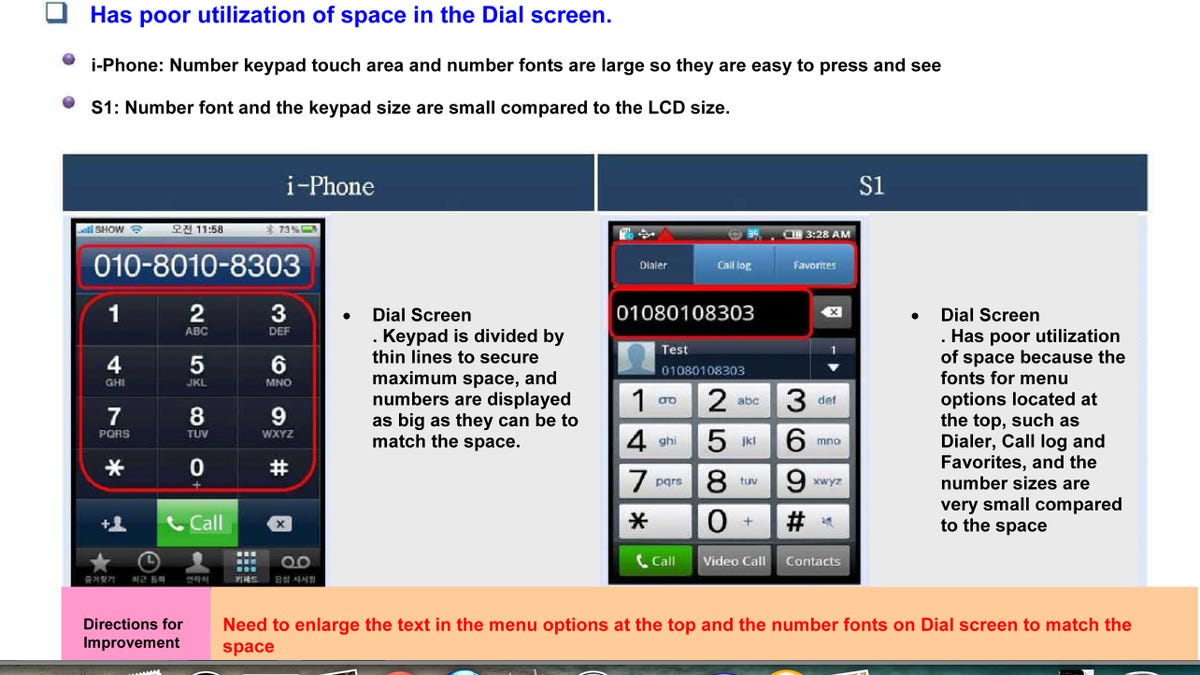Apple cites Samsung doc as proof it wanted to copy iPhone
Apple enters into evidence a 2010 Samsung document that compares in detail the features and deficiencies of the Galaxy S1 relative to the iPhone.
Apple is pointing to an internal Samsung document highlighting the weaknesses of the Galaxy S1 compared with the
The document, a "relative evaluation report" on the Galaxy S1 and iPhone published in March 2010 and unearthed by Apple, highlights where Samsung's flagship phone fell short of the iPhone. The report looked at several different features, from the call screen to the browsing experience and even the difference in the calculator.
Apple will draw on this document as proof that Samsung actively compared its products against the iPhone, and made strides to better mimic the blockbuster device. Samsung, however, would argue that it does opposition research against all of its major rivals.
"Samsung benchmarks many peer companies," the company said in a statement. "In fact, these are typical competitive analyses routinely undertaken by many companies in many industries - including Apple."
At the time, of course, there was no bigger rival than Apple and its iPhone. While Android was still getting under way, Apple was the undisputed champ in the smartphone arena.
According to the report, Samsung found 27 items under basic function that fell short against the iPhone, including the efficient and effective use of the screen real estate. It also found 22 items under visual interaction effects, such as the effect for saving mail and screen transitions, and noted that the Galaxy S1 had fewer effects aside from the major menus. Other categories included browsing, messaging and multimedia, with various deficiencies listed.
While the Galaxy S1 was a modest success in the U.S., it was popular globally, and helped lay the foundation for the more successful
Updated at 1:38 p.m. PT: to include a response from Samsung.
Here's the Samsung document that Apple is citing:


